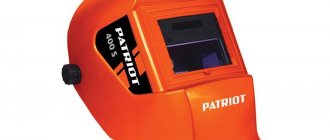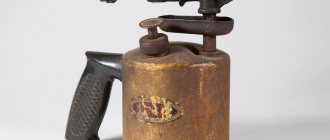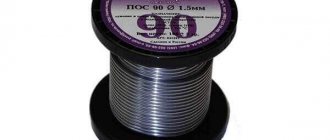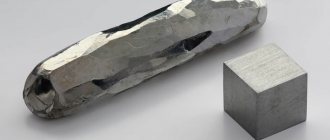Collectors will go to great lengths to get their next trophy! Things are the same with stamps, so it’s no wonder that the cost of some of them reaches astronomical values. Of course, not all old stamps are equally valued in philatelic circles, so it is worth knowing their value and which ones should be urgently brought to experts. If you suddenly find an old grandfather’s album in the attic, this does not mean at all that he will make you rich, but you should not discount this possibility either.
How to understand that a brand has value and what it depends on
Of course, one should not exclude the possibility that the stamps found will indeed turn out to be valuable. Certain knowledge will help to verify or, on the contrary, refute this fact, according to which the value of stamps is determined by the following characteristics:
- Rarity, which directly depends on the limited edition. And naturally, the smaller the latter was, the more valuable its few copies will be. This also includes the inaccessibility of such stamps, which also inflates the price of rarities to the skies.
- Story. Typically, stamps whose release was timed to coincide with some large-scale event that later became historical are valued much higher than copies issued before or after, even if the time gap is minimal.
- Print date.
Here everything is even simpler - the earlier the stamp was issued, the higher its price.
- Marriage. Some may be surprised, but any defect on stamps is valued by philatelists as highly as errors on coins by numismatists. Gaps in perforation on the perforation, incorrectly printed color, errors in inscriptions and numbers and other accidental mistakes only add value to the stamps. It’s even better if you come across a copy that has several manufacturing defects.
There are also factors that, on the contrary, bring down the price of even the most initially expensive copies. And first of all, we are talking about appearance, and if it loses its presentability, it will no longer be possible to sell the brand at a high price.
In addition, it is important to remember that only factory defects that were made in sketches or directly during printing are valued . Well, everything that happens to the brand later does not count, and you can no longer count on the successful sale of torn, wrinkled, painted or stained copies.
Analyzers of metals and alloys
Accuracy and efficiency of control of manufactured products, determination of the chemical composition of products made of metals and alloys, determination of quality indicators of test samples, identification of heavy metals are important processes in many industries. This type of analysis is most popular when working with recycled metal raw materials. Obviously, it is simply impossible to perform such an analysis without special instruments for analyzing the composition of metals, and doing such work also quickly means increasing work efficiency.
Analyzers that were invented to solve such problems are called spectrometers. Thanks to these devices, it is possible to accurately determine what metals are contained in the sample under study, as well as determine their quantity. Such devices provide non-destructive testing of metal, that is, the use does not require manipulation of the integrity of the test sample.
Select a metal analyzer
There are two main categories of analyzers. The first uses the phenomenon of optical emission; such devices are called emission spectrometers. The second category uses X-rays to obtain the required information about an object; such spectrometers are called X-ray spectrometers. Metal analyzers can be classified differently as optical emission and x-ray fluorescence.
Each of these types of devices can be stationary, mobile or portable. Stationary ones are quite large and usually take up a lot of space, so they are used if perfect accuracy is required. Mobile spectrometers are designed in such a way as to ensure their easy movement; versions can be on wheels. The most compact are portable analyzers. Their appearance was a step forward in the field of metal research, and provided the opportunity to use analyzers directly on site.
Optical emission analyzers of alloys
When studying objects with optical emission spectrometers, spark analysis and air-arc analysis methods are used. Optical emission analyzers allow you to work with a wide class of metals, for example, aluminum, titanium, ferrite, cobalt, copper, stainless and low-alloy steel.
Laser spectrometers operate on argon and are equipped with a special removable attachment on the sensor, which allows you to select the operating mode of the device among the following:
- Determination of metal grade;
- Determination of the alloy by comparing the reference spectrum with the spectrum under study;
- “Yes-no” mode, which determines a certain parameter or a given type of metal.
What stamps are valued by philatelists: photos and prices of the most sought after items in the world
Having understood the issue of determining the value of stamps, it would not hurt to reinforce your acquired knowledge with information about the copies that are today considered the most in demand throughout the world.
Mauritius
No, on this stamp you will not see picturesque landscapes from this respectable African resort. Instead, there is a portrait of the royal person and the erroneous mark Post Office, when it should have been Post Paid.
And it is precisely for this marriage that collectors are ready to turn their pockets inside out, especially since only 28 such stamps are known in the world today.
As for the cost, the lucky owners of paper Mauritius manage to fetch up to $20 million for it at auctions (attention!)! This is such a million dollar mistake. More precisely, 20 million.
An error was made during the printing of this stamp - the marking was Post Office instead of Post Paid. And it is for this marriage that collectors are willing to pay huge sums, especially since in the world today only 28 such stamps are known
Holy Grail
And this stamp will cost philatelists even more, since the cost of individual copies of the circulation reached 30 million. The reason for this popularity is simple - there are two Grails with Franklin left in the world, and if one of them can be seen in the New York library, the other is in a private collection .
Swedish unique
A yellow stamp printed in Sweden in 1855 costs no less than $2.3 million! And all because someone at the printing house made a mistake, filling the press not with green paint, as originally planned, but with this ocher color.
This stamp was printed in Sweden in 1855 and was originally intended to be green. But something went wrong and now it costs as much as 2.3 million dollars!
Jenny
For this brand you will also have to pay a considerable amount - 3 million dollars!
At least, that’s what an unknown collector gave for it in 2017, who encroached on the image of an inverted Curtis-Jenney airplane by mistake. But back in 1954, the entire block, consisting of 4 thematic stamps, was bought for a little more than 18 thousand. And although this is also a serious amount, it is obvious that much more was gained.
Hawaiian missionaries
As you can see, the most expensive postage stamps are not particularly attractive. Here, too, instead of the beautiful Hawaiian Islands, you can see something blurry.
And this is not an unfortunate accident - the stamps were simply printed on poor equipment, and even on the thinnest paper.
And since only 16 of these stamps have survived to this day, it is not surprising that each one costs about 500 thousand dollars, especially considering that the edition was printed back in 1851.
These stamps were printed on poor equipment, and even on the thinnest paper. And since only 16 such copies have survived to this day, it is not surprising that each of them costs about 500 thousand dollars
Black penny
And here is the very example when it is not rarity that is valued, but other nuances, because this stamp is relatively common, despite the seal of 1840. However, it costs about 2 million, becoming the first stamp in the world to be mounted on glue, which was a kind of revolution in the postal industry.
Audrey Hepburn
Perhaps the most beautiful stamp from this top, which, moreover, is relatively new, having been printed in 2001. This event took place in Germany, and it was initially planned that the brand would be included in a charity series, in which, in addition to Hepburn, other world stars were to be represented - Marilyn Monroe, Charlie Chaplin, etc.
But it didn’t work out, because the star’s son, who had the rights to use her image, didn’t like the cigarette in his mother’s mouth.
As a result, all 14 million Hepburn stamps, except for 30, were destroyed without ever making it into circulation, while the remaining 30 today wander from collection to collection, valued at 94 thousand dollars.
If the son of the famous film star had not been offended by a cigarette, then today a stamp with the image of the incomparable Audrey would be more accessible, since a serious edition was printed. But alas and ah, it was all destroyed, and now only a select few can admire the stamp with Hepburn’s portrait
On postage stamps in four acts
If you have ever had difficulties with how to determine the raster, understand how perforation is indicated and how the watermark is directed on a stamp, then this article is definitely for you.
Perforation
Let's start with perhaps the most common term. Perforation.
There are four main types of stamp perforation: comb, frame, linear and figured die-cutting. There is also an option for combined perforation (more on that later).
We will not dwell on each in detail, but will immediately analyze, using the example of a specific brand, how exactly to determine the perforation and in what sequence.
Figure 1. Fragment from the Z-catalogue of V. Zagorsky, part I.
This stamp shows that its perforation is different from different sides. This happens with the “combined” perforation method.
But how can we determine these 12 or 10 ½ and what does this even mean?
In order to figure it out, let’s pick up V. Zagorsky’s Z-catalogue. The first, second or third part - it doesn’t matter, we turn it over and see an example of an excellent ruler for determining perforation. It is quite easy to use and does not require any special tools, since everything is already at hand. Even the applied perforations are life-size.
Figure 2. Perforation meter on the cover of the Z-catalog.
In order to determine the size of the perforation, take a stamp and apply the side you need to the ruler. Match the black dots and perforations on the stamp. This is the perforation size.
Do this on each side, following the sequence described above, and preferably write down your observations.
Very often, “non-standard” perforation becomes the reason for the higher cost of the brand.
Paper
The paper that was used to print stamps of the Russian Empire and early stamps of the USSR is found with "honeycombs".
Honeycomb paper is good quality paper with small diamond-shaped “honeycombs” that appear when the paper is made.
Figure 3. Fragment from the Z-catalogue of V. Zagorsky.
The direction of the honeycomb, vertical or horizontal, depends on how the paper was used in printing after cutting.
The “honeycombs” are visible through the light of the paper.
Seal
Now let's talk about rasters. To begin with, a raster is the dots that make up the drawing in the intaglio printing method, speaking very generally.
There are three types of raster: horizontal, vertical and square.
And here everything is a little simpler than with perforation. Let's look at examples.
Figure 4. Fragment from the Z-catalogue of V. Zagorsky.
The type of rasters depends on the form used for printing. Either these are horizontal rhombuses, or vertical, or even squares. Presented in Figure 4.
Water marks
Figure 5. Fragment from the Z-catalogue of V. Zagorsky.
With watermarks everything is about the same as with honeycombs. This is a feature of paper designed to protect postage stamps from counterfeiting. Watermarks are different.
And the direction of these watermarks, just like honeycombs, depends only on how the paper was placed during printing. Unfortunately, there are no amazing or incredible tricks here. A watermark, like a raster, is rightfully considered one of the signs of a particular brand.
All images presented in this article can be found in our Z-catalog by V. Zagorsky, part I.
The most expensive postage stamps of the USSR era: prices in specialist catalogs
Soviet rarities are also highly valued among philatelists. And, of course, we are not talking about all stamps, without exception, issued during the Soviet era.
The most valuable lots of 2021
If we consider Soviet stamps, then today there is a special emphasis on thematic items, the release of which was timed to coincide with some important event, be it the Olympics or a rocket launch.
Series about sports
It is no secret how important sporting victories were for the Union. This was also reflected in the stamps, the issue of which was timed not only to the Olympics, but also to smaller-scale events such as the Spartakiads. Copies from the “World Spartakiad” series, released in 1935, cost approximately 10,000 rubles.
Industry
Industrialization and the Union are two inseparable concepts that also appeared on postal envelopes. And if earlier the conditional “BAM” and “50 years of electrification of Soviet railways” were found all the time, today it is a real treasure worth a lot of money.
For example, the Aspidka stamp, produced in 1931 and dedicated to airship construction, is valued at almost 4 million rubles.
The 1931 Aspidka stamp, dedicated to airship construction, is valued at almost 4 million rubles. And all because today finding one is very rare and lucky
Agriculture
Today, when many years have passed since the abolition of collective farms, it is difficult to believe that they once fed the entire Union. The few stamps that have survived to this day will remind you of this.
Space
Well, space is generally a separate topic, which is still a source of pride for many citizens of Russia’s main union successor. And although stamps with Yuri Gagarin have flown all over the world, today you can get good money for some space-themed copies.
Technical characteristics of the OMET metal detector
| 1. | Temperature difference between the “cold” and “hot” electrodes in steady state operation, ºС | 50±1 |
| 2. | The readiness time of the detector when powered from a 220V network is no more than, min. | 2 |
| 3. | Range for determining the thermopower value, µV | 0…±1111 |
| 4. | Time of one measurement, no more, sec. | 1 |
| 5. | terms of Use | Ambient air temperature from 0 to +40°C relative humidity up to 80% at 20°C |
| 6. | Overall dimensions of the determinant, mm | 170x100x50 |
| 7. | Weight of metal detector with electrodes, no more, kg | 1 |











